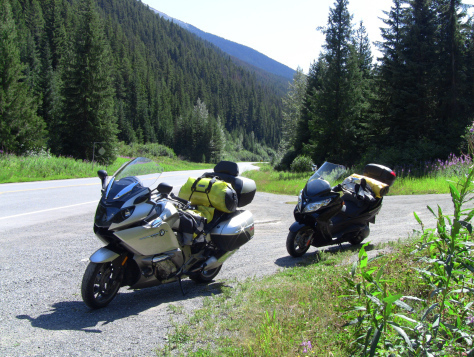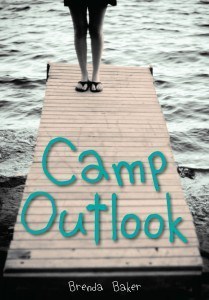Penny Draper's Blog, page 5
April 28, 2014
-24: What’s in a name?
When I visit schools, students often bring me little slips of paper with their names written on them, and ask me to include them in my next book. But names are too powerful to be casual. It may be that no one but me cares about the inside story of my names, but I need to know.
 Take Nell, for instance, the star of Graveyard of the Sea. Nell is the character most like me, or rather, most like I imagine myself. I wanted her name to have something of me in it. Since my real name is Penelope, there’s lots of scope. One of the short forms is Nell, which is also a short form for Eleanor. Eleanor means “light”, or “ray of sunshine”, and Penelope means “the woman who waits”, after Odysseus’ long-suffering wife. Nell lives in a lighthouse, so both meanings fit. And if the name fits, it’s so much easier to get the character to fit.
Take Nell, for instance, the star of Graveyard of the Sea. Nell is the character most like me, or rather, most like I imagine myself. I wanted her name to have something of me in it. Since my real name is Penelope, there’s lots of scope. One of the short forms is Nell, which is also a short form for Eleanor. Eleanor means “light”, or “ray of sunshine”, and Penelope means “the woman who waits”, after Odysseus’ long-suffering wife. Nell lives in a lighthouse, so both meanings fit. And if the name fits, it’s so much easier to get the character to fit.
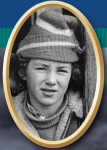 Murphy, from A Terrible Roar of Water, means sea-warrior. In that he has to battle a tsunami, I wanted the strength of such a name.
Murphy, from A Terrible Roar of Water, means sea-warrior. In that he has to battle a tsunami, I wanted the strength of such a name.
Sometimes I borrow names from real people, but not in a random way. In Day of the Cyclone, I was trying to create a community of people who could work together, so I drew every single name in the book from a dear family of my acquaintance, one whose many members share close ties. One must tread carefully here, as not everyone wants to be commemorated in this way. I’ve heard one person say the very idea makes them feel uncomfortable.
For my main character in Red River Raging, I reflect back to my pondering about Tom Sawyer and Huck Finn on the banks of the Mississippi. Finn is kind of a cool name for a boy who lives on the banks of a river. It’s Scottish in origin, short for Finlay, and means “fair warrior”. The Scots settled the Red River Valley; they were the ones who stayed after the devastating flood of 1826. It fits.
This book will be about different kinds of strength, so I pick Armstrong as a last name. Also Scottish, it means, unsurprisingly, “strong arm.” I’ll have his great-grandfather known by this name to emphasize the point.
I like Louis de Meuron for the mysterious stranger because it comes from the history of the valley (more on that later). But the mysterious stranger and great-grandfather are going to be friends, and my editor has just pointed out that putting “Louis” and “Armstrong” together will send many minds rushing off in another direction. There is no jazz in this book. I settle for Peter instead, after Peter Rindisbacher, an artist who settled on the Red River in 1821, and whose work has become important for researchers studying early settlements. He died from poisoning, either by the hand of his jealous wife or by licking his paintbrush too often; no one really knows. Much as I’d like to put him in the book, he doesn’t fit. If I use his name, I won’t forget him.
Overdone? Perhaps. But it’s like a little secret I share with myself, part of what makes the story mine.


April 27, 2014
-25: The Cover Story
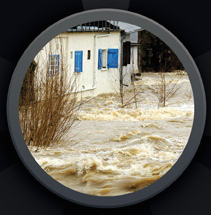 With the catalogue copy pending, we have to name the book and create a cover. Don’t judge a book by the cover, they say. Ha! It’s almost more important than the writing. Some of the very best works languish on the shelves because of poor cover design or a lacklustre title.
With the catalogue copy pending, we have to name the book and create a cover. Don’t judge a book by the cover, they say. Ha! It’s almost more important than the writing. Some of the very best works languish on the shelves because of poor cover design or a lacklustre title.
It’s the responsibility of the publisher to pick the title, although we work together on it. He suggests Red River Rising. I think that phrase is overused. I want Red River Raging. “Does a flood rage?” he quite rightly asks. “Or does it rise?” I go back to my research. Rise is really more accurate – most of the time. But when a dike fails – it rages.
Red River Raging it is.
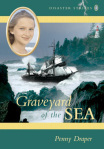
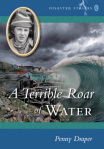 This is a series, so the cover is easy, or at least, one would think so. The first six books featured a cameo of the main character on the top left, setting the historical period, gender and personality of the main character in the reader’s mind before the book was even opened. We spent a lot of time and attention on the selection of these images. Emails from young readers suggested that they identified with the images, choosing the books because the character appealed to them. (One reader was pretty sure she was related to one of the characters.)
This is a series, so the cover is easy, or at least, one would think so. The first six books featured a cameo of the main character on the top left, setting the historical period, gender and personality of the main character in the reader’s mind before the book was even opened. We spent a lot of time and attention on the selection of these images. Emails from young readers suggested that they identified with the images, choosing the books because the character appealed to them. (One reader was pretty sure she was related to one of the characters.)
But the cameos also made the covers look old-fashioned. One could say that historical fiction is, by definition, about times past. But today’s competitive marketplace dictates that a cover must grab attention, not merely offer it. A new look was required.
The new covers are edgier, scarier, and blacker – literally. Even so, a great deal of care goes into selecting the single image. My publisher found the one for Red River Raging, heavy on the raging.
For the record, I tell the story of the two covers in classrooms and have the students vote on their favourite design. There is definitely a gender bias in the answers. But overall, the new cover is the winner. Aren’t we authors lucky to have publishers who know this kind of stuff?
Now if there was only something to put inside it…


April 26, 2014
-26: Pressure, and an Outline
All day my partner and I talk via our helmet intercoms about possibilities. Ideas are floating in my head but they lack cohesion. I’ve had female protagonists, male protagonists, dual protagonists, a mystery…what’s next? An ensemble cast? A supernatural element? Make it a comedy? A comedic disaster would indeed be a challenge.
This morning I received an email from my ever-patient publisher. He doesn’t want to push but the spring catalogue is about to go to press and they need copy. Could I please tell them what the story is about? This is it. I have to decide. I tell my partner that we have to stop early and make sure our roadside motel has wifi. We do, and it does. He gets me a cold drink then makes himself scarce. I close the drapes and up the air conditioner. If I’m cold I’ll walk, and I think better when I’m walking.
The Outline:
I’ll make my main character thirteen, a boy, and quirky. He will tell the story in first person which will become my first challenge since I’ve never written a whole book in first person before. He’s a visitor to Ste. Agathe, just south of Winnipeg. He’s been left with his grandparents (why?) and needs to start at a new school. He meets new friends, i.e. ensemble cast. (How? Who? Names? What are they like?) Add a cantankerous old guy (is he a relative?) and a mysterious stranger (that angle could go anywhere.)
I need to make the flood exciting – a tall order since the foreshadowing will have to last for weeks. think I should give that challenge over to the main character - it’ll be his job to make the flood exciting. So how does he do it?
The flood will take care of itself, but each member of the cast will have to play some kind of role. The crisis of the story can’t be the flood itself because it takes place over too extended a period; Mr. Main Character will have to have some other crisis in his life to distract attention from the disaster to come. Does the disaster resolve his problem (like I did with the last book), or simply play out beside it? What role does the mysterious stranger play?
More questions than answers but I think I have enough for the catalogue, and a line of inquiry. For the record, I’m recording all this in Scrivener, an awesome computer program for writers. I don’t use it for the actual writing which I choose to do in a more free-flowing way, but as a tool to organize one’s thoughts and research it’s wonderful.


April 25, 2014
-27: Pick another River
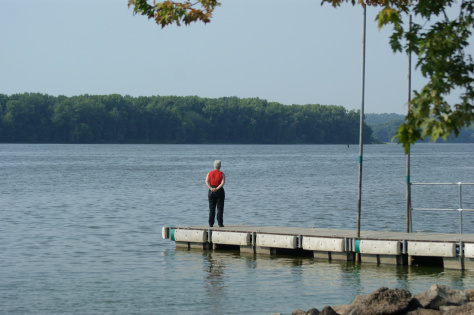 The Mississippi River
The Mississippi RiverToday we drive south, following the Red River across the border, past Drayton and on to Grand Forks, a city virtually destroyed by the 1997 flood. I can barely see the river, it’s so low. How can it be a killer?
On the way back west we pass through five states full of cornfields. There are no rivers anywhere. I’m thinking about the flood as hard as I can, but all that comes to mind is: does the world really need this much corn? My partner leads me to the Mississippi where we pause, and I ponder. Surely there will be inspiration here on the banks of one of the most famous rivers on the continent but no, all I can think of are Tom Sawyer and Huck Finn. And they’re already in a book.


April 24, 2014
-28: ideas over coffee
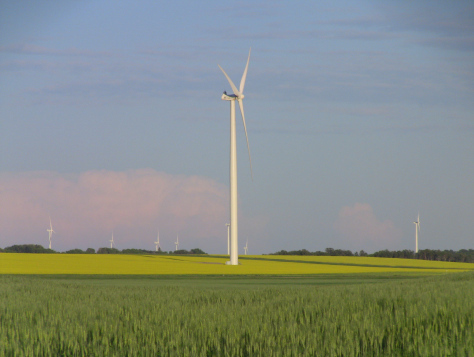 Manitoba wind farm
Manitoba wind farmNext morning we stay in a tiny community just west of Morris, Manitoba. The only place to eat is the legion and it’s not open for breakfast, so we’re directed to a small white house a few miles away. “The girls’ll set you up with a fine breakfast,” we’re told.
We park our bikes and walk into the small white house. There’s a bunch of men, farmers, sitting at a big table in the middle of what appears to be a living room, and all talk ceases when we walk in.
After a moment of silence, one of the farmers speaks up. “You’re going to want to get some coffee over there,” he says, pointing to a coffee pot in the corner, “then just tell the girls what you’d like to eat.”
The “girls” were about seventeen and twelve respectfully, Mennonite, and very shy. We got our coffee and ordered eggs and pancakes. Best we’d had en route. One of the farmers pulled his chair over to our end of the table. “So,” he says, “those your bikes?” For the record, the bikes are a great icebreaker.
We talk bikes, British Columbia, road trips, flax, canola, wind power and of course, the weather, and finally get to the flood of 1997. Not what the farmers were expecting for breakfast conversation sixteen years after the fact but I’m desperate for details. And I get some.
Sandbags. Contamination. After-flood crops.
Helpful, but this kind of research is slow going.


April 23, 2014
-29: Dikes, Dogs and Despair
 Ring dike around a house
Ring dike around a houseI am now in despair, a dramatic state of being but appropriate to my mood. My partner finds a nice spot under a tree by the river (that same river that is supposed to be story-worthy but is just sitting there, doing nothing) and suggests I tool around on my scooter and explore. “Maybe something will come to you,” he says. Off comes the motorcycle gear, out comes a book, and he settles in.
So I start driving, loosely following my “Routes of the Red” driving tour. I see the ring dikes around the smaller communities south of Winnipeg. I see homes with substantial dikes around them. I see the floodway, integral to flood control. Okay, so seeing the floodway gates is helping me understand how it works, so I’m calling this progress. There’s a fox climbing around the base of the rocks, but this is interesting only in that I rarely see foxes in the wild. I wonder if this small creature has a place in the book?
Back at the river, my partner and I dig into our picnic lunch, and along comes a woman walking a dog. She’s interested in the bikes with the BC license plates, so we chat. “Were you here during the flood of 1997?” I ask. She was, and she’s willing to talk.
Church bells.
Defiance of the evacuation order.
A dead dog.
Now we’re getting someplace.


April 22, 2014
Deadline: Minus 30 days
I’m doing research, can’t you tell?
My choice would be to have the story in mind then do targeted research. To date, it’s been an efficient process and as you’ll soon see, if I don’t focus my research I tend to drown in it. But I’m still searching for a story, a hook, a way in. So this time it’s research first, and I’ll see where it takes me. This could be a very dangerous methodology, given my fascination with esoteric detail.
To begin my research I will have to go to the Red River and check it out. During flood season would be good but I’m not a masochist; I never promised that I would actually experience the disasters I write about. Summertime will be far more pleasant than spring, and the destination a great excuse for a motorbike trip. I realize that the Red River is 1900 kilometres away, but who said that writing was easy?
So we’re off. My partner’s motorcycle is a BMW 1600 something-or-other; mine is a 400 Suzuki Burgman and yes, it’s just a scooter. But it’s a totally COOL scooter! Driving cross-country is giving me lots of time to think and hopefully be inspired, but so far there is still no story in my head. I know that if I could just see the river itself and talk to the people who live there, then surely the story will present itself. Key to the research is a visit to the Ste. Agathe Flood Interpretive Centre.
It’s over 30 degrees and the motorcycle gear is weighing heavily on our backs – literally. After eight days on the road we’re close to the Interpretive Centre and I’m excited. But unbelievably, it isn’t open. This in spite of the opening hours posted on the internet, the huge highway signs, the references on numerous tourism sites, and the fact that it is an official stop on the “Routes of the Red” driving tour. Dripping with sweat and dashed hopes, I prowl until I find a nearby farmer. He says he can’t remember it ever being open.
This can’t be true.


April 21, 2014
Inside the Author’s Head
The actual process of writing a book is nowhere near as romantic as one might think. It’s full of hills and valleys, broken pieces, dead ends, distractions, frustration, procrastination and slogging.
I love it.
One hears a lot these days about “Thirty Day Challenges.” Well, here’s a doozie, one actually attached to a contract, so there can be no fooling around. Here it is: my next book is due out in thirty days. Due to a large number of false starts, I ended up writing the entire manuscript in thirty days. In order to stay sane, I documented the twists and turns of the process and for the next thirty days, I will share them with you. One book from start to finish, from inside the author’s head. There are times when it’s a scary place.
The goal:
40,000 words
target audience 8-13 years old
eighth in a series of historical fiction about Canadian disasters
The real world timeline:
January: My publisher and I agree that the deadline for the completed manuscript will be Sept.30.
March: After debating between flood or forest fire, we go with a flood. A great, mucky mess of a thing because after all, floods are a part of the Canadian experience and deserve a place in the Disaster Strikes! series.
April: The Saguenay floods are appealing, but I choose the Red River because it is the iconic poster child for Canadian floods.
May: Initial research fails to inspire any sort of story. There’s no hook. So I keep researching…
June: Still nothing…
July/August: Desperate, I actually go to the Red River.
September: Ready or not, I write the book.
The challenges:
This is a series, so I need to ensure that the approach is fresh, not formulaic. I need to make sure that I push myself as a writer and approach the subject in a new way.
A creeping disaster is much harder to write about than a fast disaster. Watching the water rise will be a slow, agonizing process, much like watching grass grow. It’s hardly as exciting as a rockslide or a tsunami. Do I really want to write a slow, agonizing book?
I still have no story.
The first seven posts in this thirty day challenge actually cover the July/August research period. Actual writing starts on Day 7, or in the real world, on September 7, the day after I get home from the Red River.
Ready or not, here I go. Stay tuned.


April 14, 2014
Reading Town Canada
 Crescent Park, home of a reading glen
Crescent Park, home of a reading glenA few years ago, I was invited to be a speaker at the Festival of Words in Moose Jaw, Saskatchewan. It was one of the most intimate festivals I have ever had the pleasure of attending, leaving me with many memorable conversations to take away and ponder. Really, what could be more revealing than discussing books while soaking in a mineral spa? That summer, Moose Jaw became for me a literary hub.
This morning, I heard the most wonderful thing. Moose Jaw is about to become a literary hub for the entire country. From May 3-10, 2014, the National Reading Campaign is partnering with the Festival of Words (with the financial support of TD Bank Group) to turn this city of 35,000 into Reading Town Canada. For one week, pizza will be delivered with a poem, lending libraries will spring up all over town, Welcome Wagon packages will include a book from a local author, babies born will receive a collection of books, and parks will have “reading glens” with books, newspapers, benches and blankets. And that’s just the beginning.
I can’t think of anything more heartwarming. I love the idea of incorporate reading into other parts of our lives. We’ve tried it before – remember Poetry in Transit?
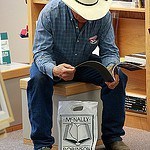 I’m trying to think of even more ways to add reading to the daily routine. What one thing would you do to make your town into a Reading Town?
I’m trying to think of even more ways to add reading to the daily routine. What one thing would you do to make your town into a Reading Town?


April 4, 2014
Camp Outlook
From the very first page it’s impossible not to be captivated by Camp Outlookand twelve-year-old Shannon James, the reluctant camper who has a secret. Funny, wise and brutally honest with herself (and everybody else), Shan struggles to figure out the mysteries of life even when nobody else, including God, plays by the rules.
Other than a few little oddities (like her mom’s pink lipstick and her dad’s ponytail), Shannon’s family is completely normal, which is just the way she likes it. But when her mom’s pregnancy doesn’t proceed as expected, normal flies out the window. Her parents, “overwhelmed with life”, ship Shan off to church camp. It takes a crush, a fight, becoming an atheist (twice), a little illegal activity and a trillion speckles of light to help Shan figure out what “normal” means to her. Shan’s observations of life are hilarious, acute, and sometimes devastatingly sad. Her personality shines from the start, skillfully capturing readers, teasing them deeper and deeper into the story.
Brenda Baker writes with great self-assurance and an easy style; Shan’s vibrant voice comes straight from the heart. This isn’t just a good book; it’s an important book that will stay with readers. It deals with self-image, change, disability, tolerance and friendship without ever becoming an issues book. Camp Outlook is a must-have for schools, and a must-read for everyone else.
Camp Outlook
By Brenda Baker
978-1-927583-35-7
Second Story Press
March 1, 2014
256 pp
Ages 9-13




